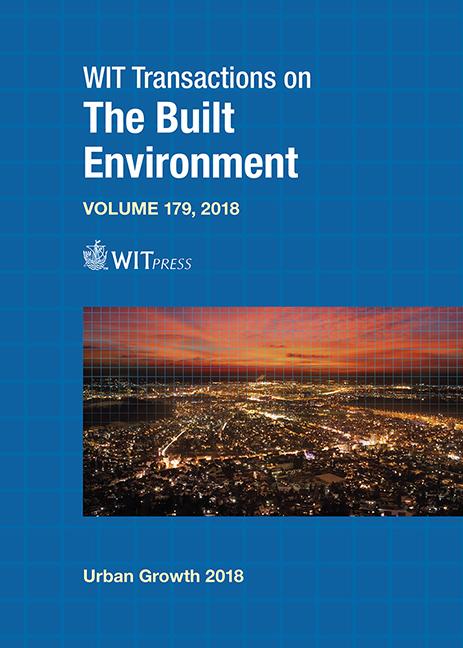MOBILITY AND COLLATERAL EFFECTS ON CITY HERITAGE IN AGUASCALIENTES, MEXICO
Price
Free (open access)
Transaction
Volume
179
Pages
12
Page Range
57 - 68
Published
2018
Size
601 kb
Paper DOI
10.2495/UG180061
Copyright
WIT Press
Author(s)
ALEJANDRO ACOSTA COLLAZO
Abstract
Beginning in the third millennium, Mexican cities increased in urban mobility, but it wasn’t until the decade following 2010 that the city of Aguascalientes began rapid growth mobility, dramatically changing its historic centre. Changes in this cultural site have taken place not only in the buildings, but also in daily lifestyles. There is a lack of reliable mobility choices now, yet Aguascalientes is a city far away from designing and building a subway. There is still the chance to promote sustainable urban growth by encouraging the use of less polluting mobility systems, like electric cars and bicycles. Also, Aguascalientes has a lack of parks and bikeways. Moreover, city planning has overlooked having proper zoning in the historic centre; as a result, there are factories, commercial places and museums all mixed up together in the historic quarters. It’s convenient to set a suitable relationship between cultural heritage and increasing mobility. The idea behind studying mobility is to find out how people go to a certain place and to discover new ways to make the process more efficient. Mobility is somehow changing the historic centre. There is a strong link between mobility and the loss of heritage buildings. There’s also a mobility conflict between cultural and commercial activities in the historic centre. The fact is that we are losing cultural advantages by allowing a lot of commercial business to get established in the historic centre. The main consequences of this situation are the building of parking lots and the decay of the population. It is through the identification of parking areas, documentation of flow frequency, the use of historic drawings and historical population data that the loss of this type of architecture could be determined.
Keywords
Aguascalientes, city planning, historic centre, mobility, preservation, transportation, urban growth





